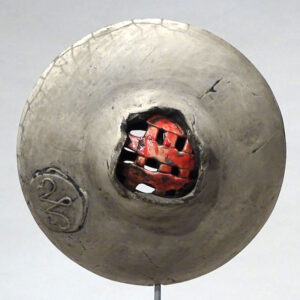
He graduated from the Institute of Fine Arts “Ion Andreescu” in Cluj Napoca in 1975. She lives and creates in Târgu Mureș, and is also the president of UAPR Târgu-Mureș. He has an exceptional exhibition activity. Mana Bucur was initially attracted to porcelain, and the factories in Cluj made it easy for her to create with this material, as did the factory in Curtea de Argeș, between 1975 (the year she graduated) and 1980, when she settled in Târgu Mureș. A retrospective look at his work reveals a concern for the expressive valences of the ceramic object, an interior object, interpreting the material in domed volumes, – with curved shapes (most often), glazed less often. The “Eyes for Eyes” or “Eyes to See” series of RAKU heat-treated kreaton, burned at over 1000 degrees C, also includes some “unfinished” or broken shapes. We are in front of a direct, generous communication, revealing a fiery temperament, and in some works we also admire the graphism of the graceful, gray-brown surfaces.
– Maria Zintz: I’m going to ask you a recurring question. When did you decide to create in ceramics?
– Mana Bucur: When I graduated from high school I met an engineer who was just working on a ceramic manufacturing project. I won’t hide the fact that at that time I was planning to study architecture and this gentleman was preparing me in this field. Accompanying him to this budding manufacture, I was amazed by the possibilities of the ceramic material. I’ve always loved sculpture, drawing, graphics. All this is amazing in ceramic objects.
–
Which of your classmates made a career out of it?
– Too few Antik Alexander in media/installations
–
What was the relationship with the teachers at the faculty?
– Excellent, – and here I respectfully and gratefully mention ANA LUPAȘ and MIRCEA SPĂTARU
– Let’s start with the porcelain and earthenware factories which have unfortunately disappeared. About Symposia. How have they helped you?
– For the students of the school in Cluj, the factories (three in number) were a real parallel school, everything we learned in theory we could apply in the factory, where we had all the necessary materials at our disposal, finalized with the burning. Then I was assigned to the ARPO porcelain factory in Curtea de Argeș, where, in spite of the fact that I was far from home, from Ardeal, I acquired a thorough knowledge of porcelain manufacturing technology, an influence that is still visible in my current work. I participated in several symposiums, one of them was at the very factory where I was working, together with famous ceramists: Marta Jakobovici, Radu Tănăsescu, Rodica Mazilescu. They are about exchanging ideas, sharing experiences and, last but not least, teamwork. In fact, I hardly accept to participate in symposiums and camps because I feel most comfortable in my studio, but the reason why I participate is the contact with fellow artists.
– Looking back on your work, I notice your concern for the expressive value of ceramic forms. Tell us something about this.
– As I mentioned, sculpture and graphics/drawing are my favorite specialties. There are no great differences between the works of small sculpture or rather small plastic works and the vast majority of ceramic works, they are deeply intertwined, almost merging. The difference is, of course, that the former are compact and the ceramic has a mysterious hollow inside, wrapped in a protective shell. I often joke about designing an object: you take a fistful of air and wrap it in a clay shell, the air in it determining the shape.
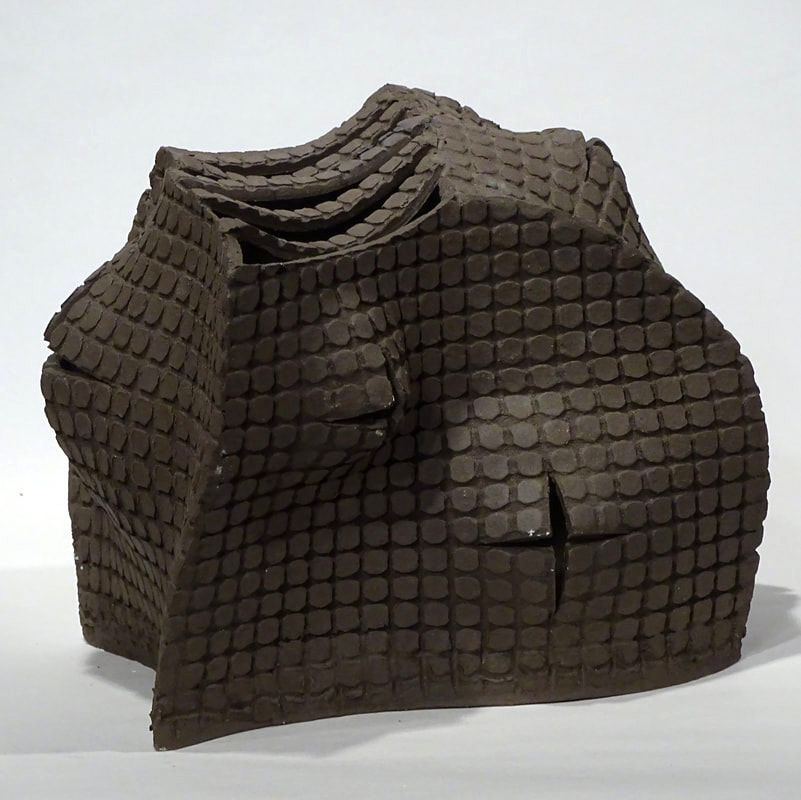
– The material comes with its suggestions, but the objects created, meant to be admired for their beauty, often contain allusions to life, some have references to duality, to dedublation, to closed-open, to the passage of time, to the form that reaches perfection. The technical qualities are complemented by grace and fragility, which can be as easily destroyed as the charm can be shattered by tearing them apart. Lately, you’ve been working with kreaton, which is a particularly plastic material that lends itself to being worked with your hands, although it’s very durable. What is the role of color in achieving the desired effects, the expressiveness of ceramic objects?
– I would like to remind you that I rarely use colored glazes, because most of the time I focus on the (sculptural) shape, I’m afraid of diminishing the sculptural look with colored surfaces, so I resort to graphic designs or grey/brown surfaces and prints.
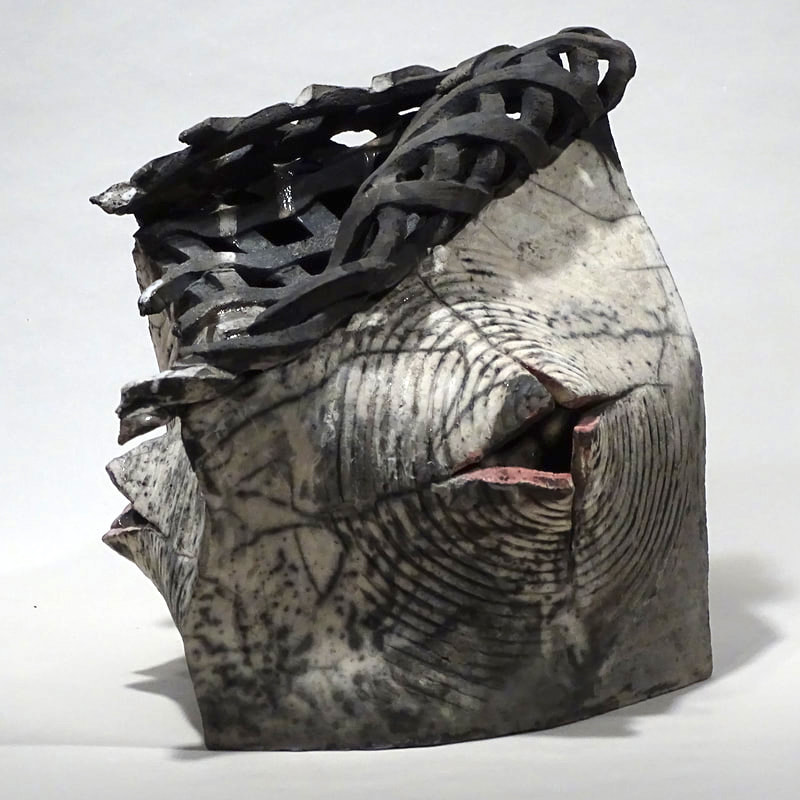
– Let’s dwell on the idea of dedublation and the passage of time. One theme, repeated throughout your work, is that of duality (the number two), in many existential (and universal) forms and meanings.
– Our whole life is patronized by the number two, duality, good/bad, big/bad, high/low, high/low, pacifist/bellicose, up/down, beginning/end and the enumerations can go on and on, a very vast theme.

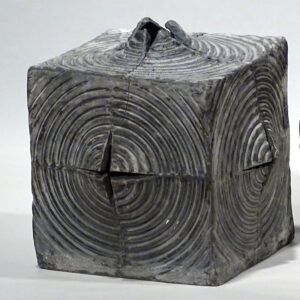
–
I remember from your rich activity the series of Boxes with which you participated in camps and exhibitions. The idea of the box has fascinated you since childhood, raising the question: “what can it hide?” It is also used through the prism of duality: aggressive boxes or friendly boxes, some allow you to open them to penetrate their mystery, others, atypical, incite by the fact that they do not allow themselves to be understood. So the “envelope” becomes an object in itself, whether it is a bird-box, with slightly aggressive notes through the incisiveness of its corners, or a trap-box or a glued box. How and when did this idea come about?
– You mentioned it yourself. my childhood impression but also the fact that for a long time I was in charge of packaging design at the Electromures factory, which influenced my preoccupations in this respect. This is how the traps appeared, as I have already mentioned, the punch of air handcuffed in the clay shell which caused the shape to break free, and so the cracks, cracks and tears appear.
– A constant preoccupation has been to create unique, handmade objects, fired at over 1100 degrees and treated in the raku (reductive firing) technique, naked raku in particular. Moreover, the works of the last years are exclusively made by the naked raku procedure, also present in the two raku camps organized in Deda Bistra in 2012 and 2013, together with the Cerart group of potters founded in 2007, together with a group of Transylvanian potters. The raku and naked raku burnings were carried out several times a year, the last one on the occasion of the Witch’s Burning in the courtyard of the workshops. The works are created in Creaton masses, a sensitive modeling, applied on three/four-sided pyramidal forms, distinguished by simplicity, with vertical dominance, in an overall dull color scheme, in shades of dark brown to black. At the top of one facade each, in small cut-out friezes lightly marked with smoked red. Firing in the raku technique gives light, spectacular iridescence or velvety iridescence to light surfaces, emphasizing the fine textures created by repeated shaping and etching.
– Unfortunately the CERART group almost disbanded due to lack of members, but continues annually at the Witch Burning. The RAKU heat treatment (photo-5) is done in a team and it is a real show, there are always colleagues and spectators present.
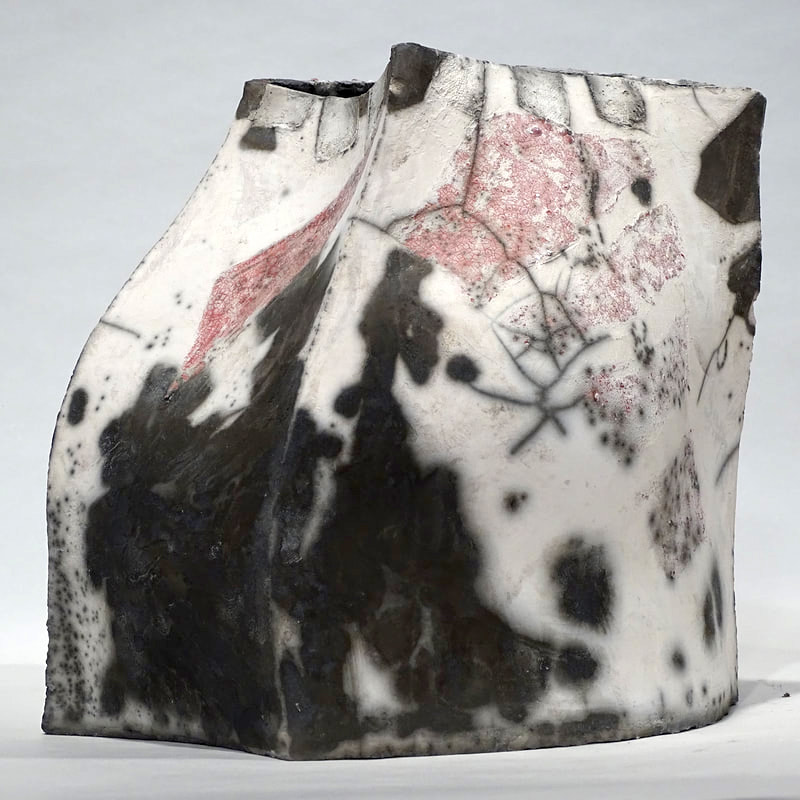
–
About CERART: You initiated the creation of the artists’ group, a small group of ceramists and enamel artists from Târgu Mureș who were joined by some sculptors, in a word, fire artists.
– The birth of CERART coincides with the organization of the Ceramics Symposium of the Bolyai Foundation, which took place in the Medieval Fortress of Târgu Mureș (August 2007) and is largely due to it, because it was then that the core group was formed, working together in a common workshop, sharing their experiences, ideas and technological solutions. Then followed the Raku actions which also require teamwork, thus strengthening the founding group of artists, fellow “guild members”. Year after year the salon with the same name is organized in the UAPR galleries in Târgu Mureș, reaching its fifth edition, efforts being directed towards other cultural centers in the country. The group consists of the artists: Vidra Birtalan Eva, Mana Bucur, Orsolya Csiki Vidra, Csorvási Szabó, Laszló Attila, George Moldovan, Moldovan Maria, Mureșan Gheorghe, Olteanu David, Olteanu Mariana and Monika Pădureț. Guests: Crăciun Gheorghe, Crăciun Judit from Baia Mare and Agnes Forro from Cluj-Napoca.
– Other topics? What techniques have you worked on?
– During my “house arrest”, as I called the restrictive period of the pandemic, not being able to work in the studio, I took up graphic art, doing small works on handmade paper. I produced enough work for an exhibition in the small gallery in the citadel, which I run.
– When did you start working with raku and naked raku? What results have you achieved?
– I came into contact with this heat treatment during the first Bolyai ceramics symposium and since then I repeat this procedure on almost all my works, I find that they fit and finally enhance them aesthetically.
–
What are the most important exhibition events for your creation?
– In my opinion, the most successful exhibitions were at the GALATEEA gallery in Bucharest and at the LA CAVE gallery at the French Institute in Cluj within the International Ceramics Biennial under the same name, PROVOCARE RAKU.
– What are your concerns now? What are your favorite topics and techniques?
– I am looking for prints of different shapes and textures in combination with stones, clay is related to stone after all.
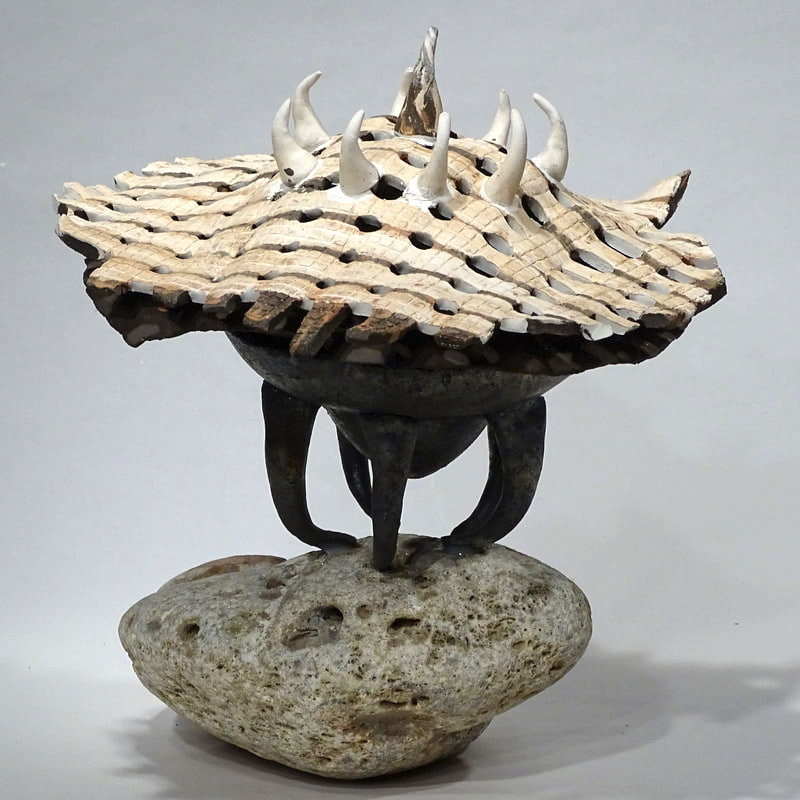
–
Projects for the future?
– There are many and I hope that the evolution of events will give me the freedom to put them into practice. Exhibitions in Bistrița, Budapest and Stockholm.
Interview by Maria Zintz.
